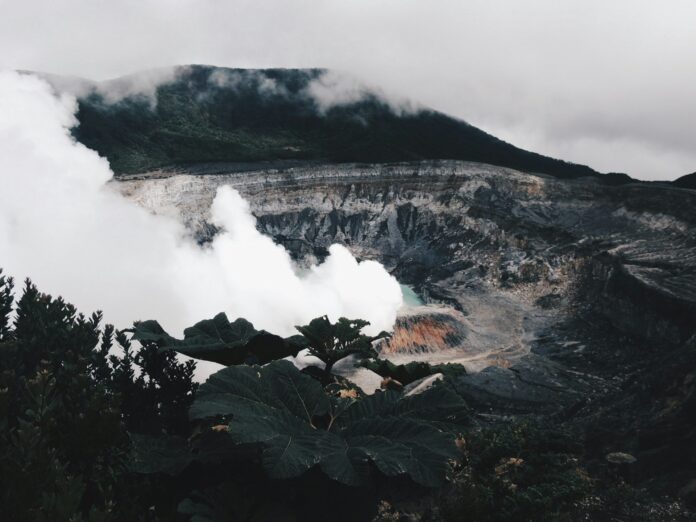Perhaps you’re reading this nursing your day’s first cup of Kenyan Black Gold? Maybe you’re enjoying your post-lunch pick me up that only a good Ethiopian Harrar can provide? Or do you swear by a freshly brewed Tanzanian Peaberry to get your through the day?
If these coffee names sound less than familiar, then trust us, you’re missing out.
Ethiopia is widely considered to be the birthplace of coffee. The word originates from the Kingdom of ‘Kaffa’ in the country and legend has it that whilst travelling in Ethiopia, the Moroccan Sufi mystic Ghothul Akbar Nooruddin Abu al-Hasan al-Shadhili noticed that some particularly perky birds loved to feed on a certain berry. When the mystic sampled the berry for himself, he experienced a similar perkiness. And so, after a process of roasting, boiling and brewing to remove an unpleasant bitterness, coffee was born.
The earliest records of coffee drinking in literature appearing in the 15th Century, when coffee was exported from Ethiopia to Yemen. Fast forward to the present day, and East Africa is one of the world’s most prolific and revered coffee producing regions, with market analysts predicting that by 2024, it will produce 7.5% of the world’s coffee. Some even believe East Africa will overtake South America as the top global market for the good stuff.
It’s easy to see why; coffee from the region is blessed with a floral and fruity complexity and a characterically elegant finish. With the majority of the best African coffee coming from the country’s east, today we’re looking at some of the most prestigious beans, blends and varieties from the region. With that in mind, here are 4 of the best East African coffee varieties we recommend you try today.
ETHIOPIAN YIRGACHEFFE COFFEE
Yirgacheffe is arguably East Africa’s most beloved coffee variety. Hailing from the birthplace of the good stuff, the coffee growing region of Yirgacheffe sits in south western Ethiopia. It’s organically grown at elevations between 1,700 to 2,200 metres above sea level and Fairtrade certified, and is harvested from heritage Arabica which has grown in Yirgacheffe for generations.
This unique terroir lends itself to a sophisticated drinking experience. Look out for Yirgacheffe’s distinctive acidity, with gentle tannic tones and plenty of juicy fruit, particularly pomegranate, and a hit of florality on the finish. After you’ve tried this Ethiopian coffee, you’ll understand why it’s considered one of the best coffees in the world.
KENYAN AA SINGLE ORIGIN COFFEE
Coffee connoisseurs around the world praise this coffee for its unique flavour profile, and you know what? They might just be onto something. Kenyan AA Single Origin coffee boasts notes of fruit, cream and chocolate, with subtle floral components also present in this ulta-rich blend. Don’t be put off by those heavier sounding elements, there’s also a bright acidity present which provides an intriguing counterpoint.
To the south of Ethiopia, Kenya produces about 50,000 tons of coffee every year, which comes from both large plantations and small-scale farms. AA Single Origin tends to come from smaller farms, which results in flavours unique to each grower’s soil, humidity, and terrain.
Grown at 2’000 metres above sea level, this high altitude cultivation is favoured by East African coffee producers since it encourages the acidity for which the region’s coffee is so revered. All in all, Kenya AA is considered some of the finest, most complex in the world. Care for a cup?
TANZANIAN KILIMANJARO PEABERRY COFFEE
This unique coffee bean is known around the world for its floral aroma and fruity hints of citrus, pineapple, and coconut, which is present in each and every sip. When compared with the Kenyan AA we just mentioned, Tanzanian Peaberry is more muted and less acidic, and is favoured by consumers looking for fruitier notes, orange and peach, if you’re wondering, with a gentle essence of hazelnut suggesting itself as an after-taste.
Grown on the slopes of Mount Kilimanjaro, the coffee beans themselves are referred to as peaberry beans because they are a slightly different shape than “traditional” beans. Traditional beans are composed of two halves that meet in the middle and fall apart once they’re roasted. Peaberry beans meet at one end and have a more full-bean shape even when they’ve been roasted.
UGANDAN BUGISU ROBUSTA COFFEE
Coffee is Uganda’s most lucrative export crop, and the country’s Robusta bean is a very different beast to the high altitude, high acidity varieties we’ve so far been drinking today. Here, Robusta grows at just 200 to 800 metres above level, close to the Lake Victoria Basin and thriving in fertile, volcanic soil.
Though many regard Ugandan Arabica as the superior variety, the low-lying, vitamin rich soil lends itself to Robusta, and particularly the country’s cherished Bugisu bean, and as a result, it’s a clean and mellow tasting product with a nuttiness and medium body. Don’t be fooled by these gentles notes, however; Robusta contains around twice the caffeine of Arabica.
THE BOTTOM LINE
Phew, all this talk of coffee has got us feeling thirsty? We’re off to put the kettle on…
If you’re keen to share a cup with us and take your coffee to the next level, then check out these 6 tips for making coffee taste great at home. You won’t regret it!
*All the coffees listed above adhere to Fair Trade standards in their farming and production*




